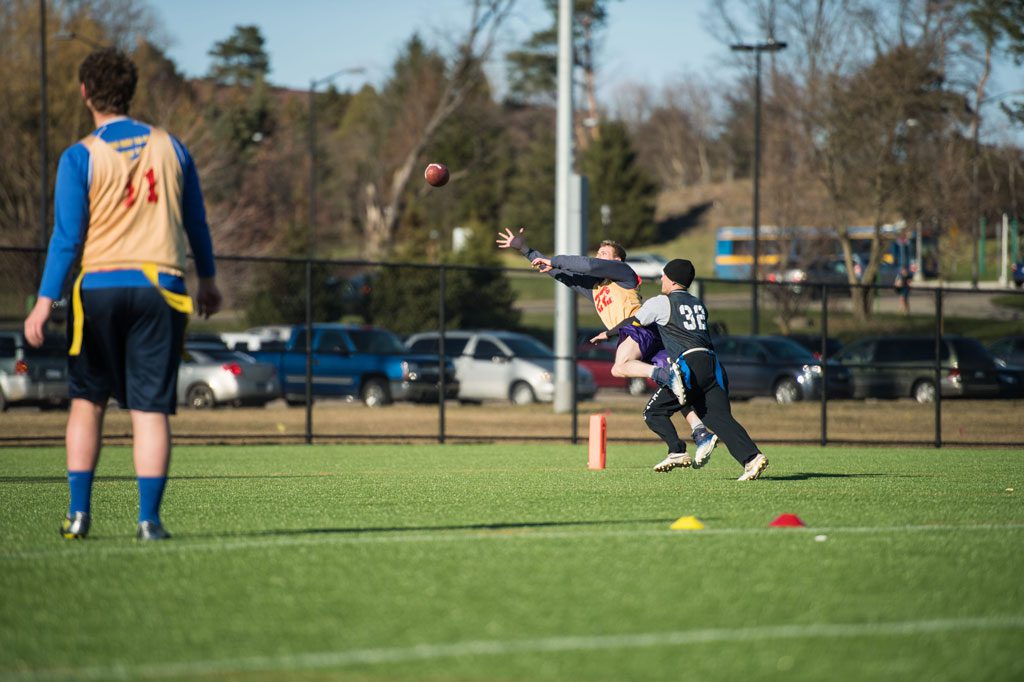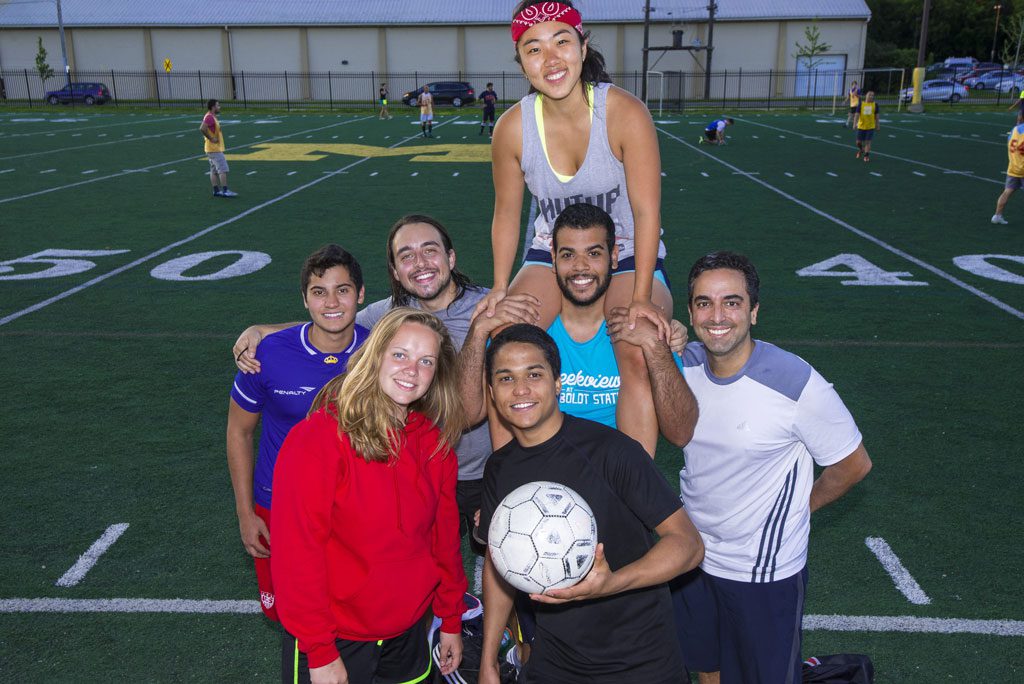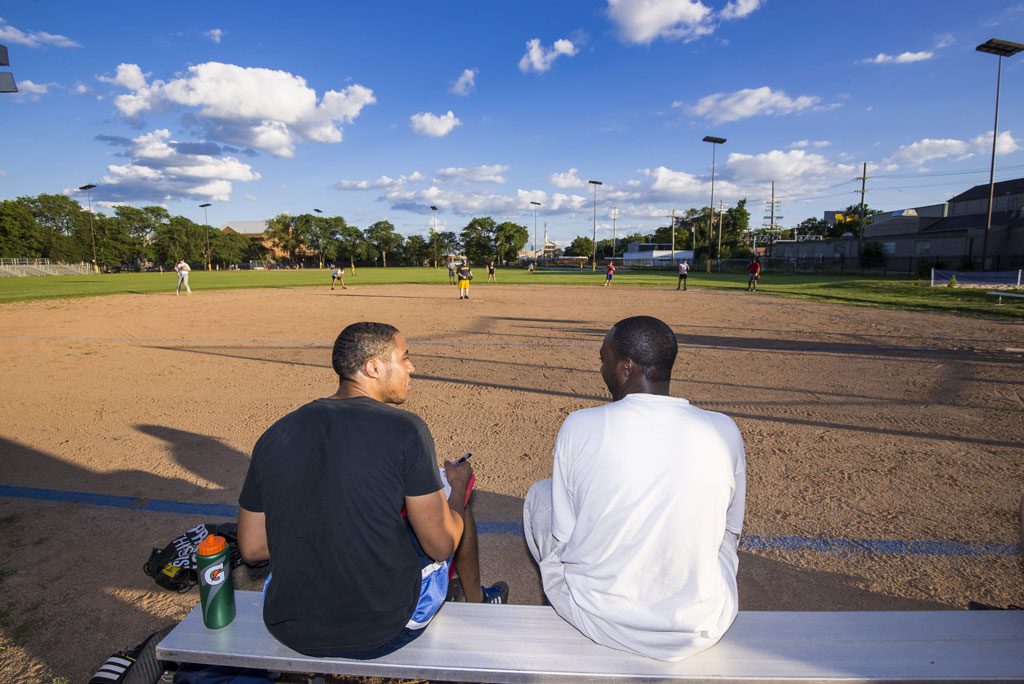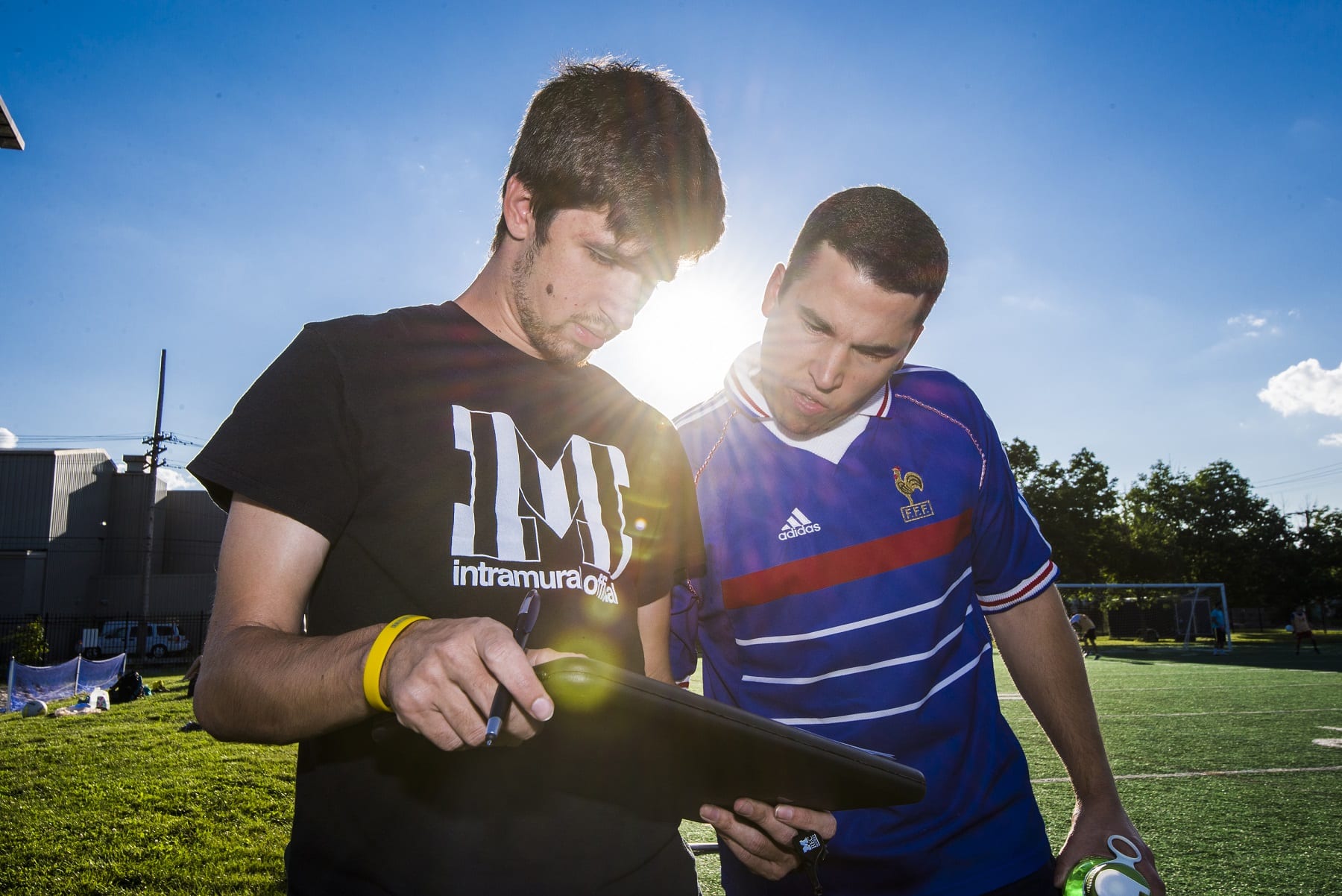At the University of Michigan, there are around 11,000 unique participants in intramural sports each year. With around 44,000 students enrolled at the university, that means almost a quarter participate in intramurals at least once throughout the course of the year. In order to accommodate such a large population of students, the campus recreation department offers an extensive selection of intramural sports.
“Flag football is our biggest sport, with anywhere from 300 to 320 teams in a year,” said AJ Haduch, the assistant director for intramural sports at the university. “Outdoor soccer is up there as well with around 240 to 250 teams. Then basketball with somewhere between 260 and 280 teams in a year.” The university also has a diverse offering of more non-traditional sports such as inner-tube basketball, broomball, floorball and wallyball.
With such an extensive offering of intramural sports, equipment purchasing becomes a key decision for Haduch. The process starts with taking stock of everything they need before the start of each school year. “We have an inventory of what we have remaining and useable from the prior year and then we will know a minimum number of what we need to get us through that season,” he explained. “So we will place an order before the start of the school year to get us everything we need, whether it is balls, bats, sticks, helmets, etc.”
Since some equipment is more expensive than others, Haduch makes sure to budget for larger purchases, like helmets for Broomball. “We will budget some money throughout the year in case we need to buy other equipment,” added Haduch. “So we will have some money set aside for that, but the large bulk purchases are made in August before school starts.”
The process is similar for Ross Winter, the assistant director for intramural sports at Michigan State University. He will start by taking inventory of all equipment needs at the end of the spring semester. “I try to forecast what we are going to use over the summertime,” said Winter. “Obviously our summer programs our quite a bit smaller than what we have during the school year, so we don’t really use as much equipment. But I take inventory during the spring and then we order all of our equipment at the end of June, so that it gets delivered in August.”
Over the past few years, Winter has actually been able to shift his equipment buying process based on student habits. He explained that students prefer to bring their own equipment. “I have found that even the participants that come play in our leagues don’t like to use our equipment,” he added. “They want to bring their own basketballs or they want to play with their own footballs. So I have found that I have decreased the number of basketballs or soccer balls that I have had to order.”
Besides developing a purchasing schedule and budget, it is essential to choose the perfect vendors. “We will have different companies approach us,” said Haduch. “For example BSN Sports and Gopher are two companies that have reached out to us and we are able to get some discounted products through bigger companies like that.”
With a multitude of vendors to choose from, Haduch suggested doing your research, especially when it comes to purchasing more specialty items like helmets or goals. “We will do our homework,” he explained. “We may research different companies out there and see if they can send us a piece of equipment or if we can stop in a store and look at a piece of equipment to test it out. We don’t order from one single company; we use multiple throughout the course of the year.”
Whether you are running a large intramural sports department like the University of Michigan or a smaller program, equipment purchasing plays an integral part in the success of your program. Overall, Haduch advises considering two key factors, your budget and the quality of the equipment. “It is really cost versus quality,” said Haduch. “We are trying to balance that. We are not buying the most expensive equipment out there, but we also want to have equipment that is going to last us and be durable.”














